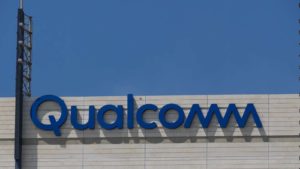The first company is a leader in materials engineering processes for advanced logic and transistor technology. It stands at the forefront of a major market shift with the transition to gate-all-around transistors. The second company is a global semiconductor and telecommunications powerhouse. It derives substantial revenue growth and diversification through its cutting-edge AI and 5G advancements. Meanwhile, the third company is a titan in enterprise resource planning solutions. This demonstrates solid growth in cloud revenue and backlog, marking its successful transition to cloud-based services.
In short, exploring these companies’ unique strengths and market strategies explains why they may become the future trillion-dollar giants.
Applied Materials (AMAT)

Applied Materials (NASDAQ:AMAT) specializes in materials engineering processes for advanced logic and transistor technology. The transition to gate-all-around (GAA) transistors from FinFET technology marks a significant growth opportunity for Applied. This shift increases the company’s market for transistor modules from around $6 billion to approximately $7 billion for every 100,000 wafer starts per month of capacity.
Certainly, Applied Materials is on track to capture over 50% of the process equipment spending for transistor steps. This strong market position in interconnect technologies is critical for high-speed and low-power data transmission. This may grow further with backside power delivery in volume manufacturing, adding another $1 billion to the available market.
Further, Applied Material’s leadership extends to high-bandwidth memory (HBM) packaging technologies, including micro-bump and through-silicon via. The company anticipates that its HBM packaging revenue could increase sixfold this year, reaching over $600 million. The advanced packaging product portfolio may generate approximately $1.7 billion in revenue in 2024. This is along with the potential for further growth as heterogeneous integration becomes more widespread.
To conclude, Applied Materials’ shift to gate-all-around transistors significantly expands its market potential, making it a high-profile contender for the future trillion-dollar stocks list.
Qualcomm (QCOM)

Qualcomm (NASDAQ:QCOM) is a semiconductor and telecommunications equipment leader. The company had revenues of $9.4 billion for fiscal 2024 Q2, which indicates a robust demand for its products and services. Qualcomm’s chipset business generated $8 billion in revenues, reflecting strong premature demand for Android smartphones and continued momentum in the automotive sector. The licensing business contributed $1.3 billion in revenues. Indeed, the high-margin nature of licensing revenues supports Qualcomm’s profitability and provides a stable income stream.
Moreover, the company’s annual handset revenues from Chinese original equipment manufacturers increased by more than 40% in H1 fiscal 2024. This demonstrates Qualcomm’s competitive end and the rebound in demand in one of the biggest smartphone markets. The introduction of the Qualcomm AI Hub highlights the company’s commitment to helping developers market on-device AI apps. The hub offers a collection of over 100 pre-optimized AI models. Furthermore, in terms of on-device GenAI capabilities, Qualcomm’s Snapdragon 8 Gen 3 mobile platforms set the standard for performance. There is a strong demand for flagship Android devices powered by these platforms, particularly in China.
Overall, the company’s Snapdragon platforms and AI initiatives position it at the top of the future trillion-dollar stocks list.
SAP (SAP)

SAP (NYSE:SAP) is a multinational software corporation focusing on enterprise resource planning (ERP) solutions. The company’s cloud backlog grew by 28% to EUR14.2 billion in Q1 2024, marking the fastest growth on record. This substantial increase in the cloud backlog indicates strong demand and a solid pipeline of future business. Cloud revenue for SAP increased by 25% annually, reaching EUR3.9 billion in Q1 2024. The cloud ERP suite primarily drove this growth. This has a 32% increase, achieving EUR3.2 billion in revenue.
SAP’s “land and expand” strategy has also been highly effective. This is particularly true when moving its installed base to the cloud. ERP Suite revenue indicates that SAP is acquiring new customers by progressively upselling and cross-selling additional services to its existing customer base. This strategy supports sustainable revenue growth. Moreover, SAP’s operating profit in Q1 2024 was EUR1.5 billion, a 19% increase compared to the previous year. This improvement came despite the adversities of restructuring provisions and stock-based compensation.
In summary, SAP’s significant growth in cloud revenue and expanding cloud backlog solidified its place among future trillion-dollar stocks.
On the date of publication, Yiannis Zourmpanos did not hold (either directly or indirectly) any positions in the securities mentioned in this article. The opinions expressed in this article are those of the writer, subject to the InvestorPlace.com Publishing Guidelines.
On the date of publication, the responsible editor did not have (either directly or indirectly) any positions in the securities mentioned in this article.
Yiannis Zourmpanos is the founder of Yiazou Capital Research, a stock-market research platform designed to elevate the due diligence process through in-depth business analysis.
